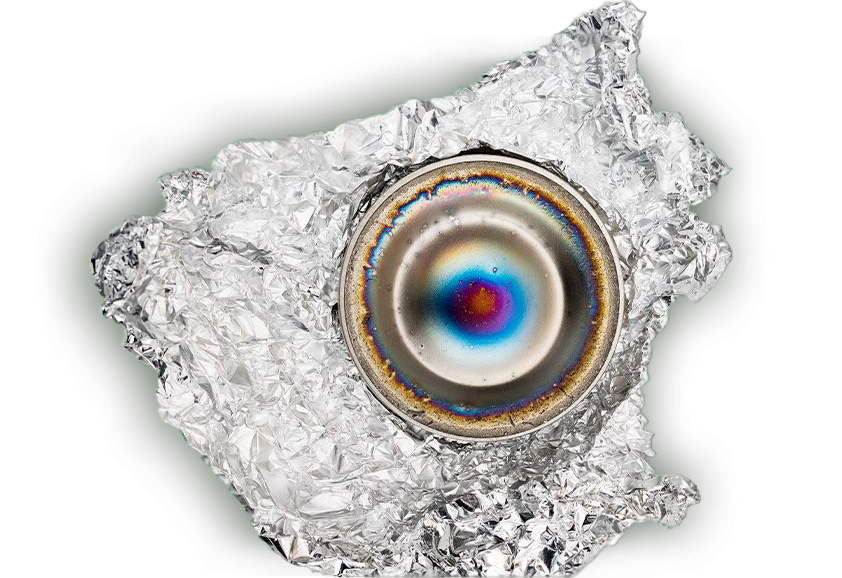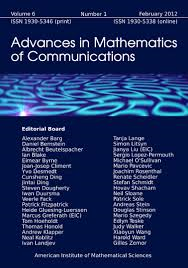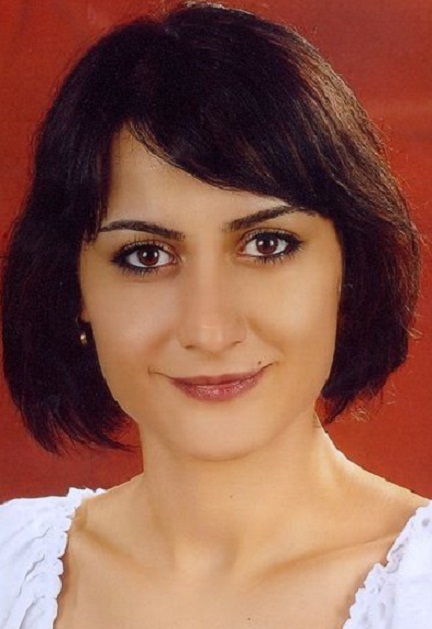1
May
Danmarks Frie Forskningsfond (Independent Research Fund Denmark) each year supports many prestigious research projects. They have just announced that they will support a research project of the algebra group. This grant will enable us to hire a Ph.D. student as well as to visit and invite researchers from all over the world. We are very grateful for the support!
A brief summary of the research project is the following:
Error-correcting codes ensure reliability in e.g. satellite communication, distributed storage and cloud computing. It is vital that the error-correction can be done fast. Excellent error-correcting codes can be constructed using algebraic curves – AG codes – but no fast decoding algorithms are available for these codes. This has limited their theoretical impact and prohibited any practical impact. This project aims to change that.
Decoding of AG codes boils down to solving a Padé approximation on the algebraic curve. Current techniques throw away many levels of structure, leaving a problem on univariate polynomials. We will seek algorithms that retain these levels, and we will build on the latest developments in computer algebra. We expect improvements for both the simplest as well as more complex AG codes.
The project will be carried out by the algebra group at DTU and international collaborators from France and Canada.
14
Apr
From April 15 til May 8, Prof. Masaaki Homma from Kanagawa University visits the algebra group. He will work with Peter Beelen and Mrinmoy Datta on problems related to the intersection of a Hermitian surface and a surface of degree d. The aim is to solve a conjecture posed by a Danish Ph.D. student A.B. Sørensen in 1991. For d=1 and d=2 the conjecture is known to be true, while Peter and Mrinmoy recently made significant progress for d=3, see this previous post. For d>3 nothing is known as yet, but this may change soon!
21
Mar
As announced in a previous post, Peter Beelen and guest Ph.D. Maria Montanucci recently solved a conjecture on the structure of Weierstrass semigroups of points on the Giulietti-Korchmaros maximal curve. These results have now appeared in the journal Finite Fields and Their Applications. Click here to see the article.
19
Feb
Peter Beelen and Mrinmoy Datta have just submitted an article in which a conjecture from 1991 by Sørensen is partially resolved. In this conjecture a formula for the minimum distance of q^2-ary codes constructed from Hermitian surfaces is given. Equivalently, the conjecture gives a formula for the maximal number of GF(q^2)-rational points that a Hermitian surface and a hypersurface of degree d>1 can have. For d=2, the conjecture was solved in 2007 by Edoukou, but since then no progress has been made until now. We show that the conjecture is correct for d=3 as long as q>7. A preprint can be found here.
18
Dec
The article Counting Generalized Reed-Solomon Codes by Peter Beelen, David Glynn, Tom Høholdt and Krishna Kaipa has just appeared in the journal Advances in Mathematics of Communication, volume 11, issue 4, pages 777-790, doi: 10.3934/amc.2017057. The work started by a question of the fourth author posed at a conference in India in 2013 and grew out to a nice journal article in the years after. You can see an updated preprint of the article here.
13
Nov
In a new preprint Peter Beelen and guest Ph.D. Maria Montanucci describe a new family of maximal curves. Maximal curves are algebraic curves defined over a finite field, having as many rational points as allowed by the famous Hasse-Weil bound. Such curves are of great interest by themselves, but are also the most obvious curves to choose when constructing algebraic-geometry (AG) codes.
Note that the depicted curves don’t have anything to do with the new maximal curves. The new curves are over a finite field and are therefore difficult to meaningfully depict graphically.
1
Sep
Peter Beelen and guest Ph.D. Maria Montanucci have solved a conjecture on the structure of Weierstrass semigroups for certain points on the Giulietti-Korchmaros maximal curve. This conjecture was posed in 2011 in the article Two-Point Coordinate Rings for GK-Curves, IEEE Trans. Inf. Theory 57(2), 593-600 by I. Duursma. Apart from proving the conjecture, Peter and Maria in fact determined the structure of the Weierstrass semigroup of any point on the GK curve. A preprint of these results is available here.
8
Aug
Maria Montanucci a Ph.D. student in Mathematics at Università degli Studi della Basilicata (Potenza, Italy) who visited the algebra group 1 April – 31 May this year, just started the second part of her stay with the algebra group at DTU. This time she will be here from 1 August – 30 November. During her last stay she obtained interesting results on maximal curves and she will continue to work on this topic with members of the algebra group.
1
Aug
Nurdagül Anbar, who previously has been a HCØrsted postdoc at DTU, will visit the algebra group in August. She will work on the construction of lattices from function fields. Lattices are for example used in lattice-based cryptography.
3
Jul
Associate professor Alp Bassa from Bogazici University, Istanbul, will visit the algebra group this week. He will work with Peter Beelen on Drinfeld modular polynomials, which have applications in the theory of asymptotically good, recursively defined towers of function fields. Such towers in turn are used to produce excellent error-correcting codes.





